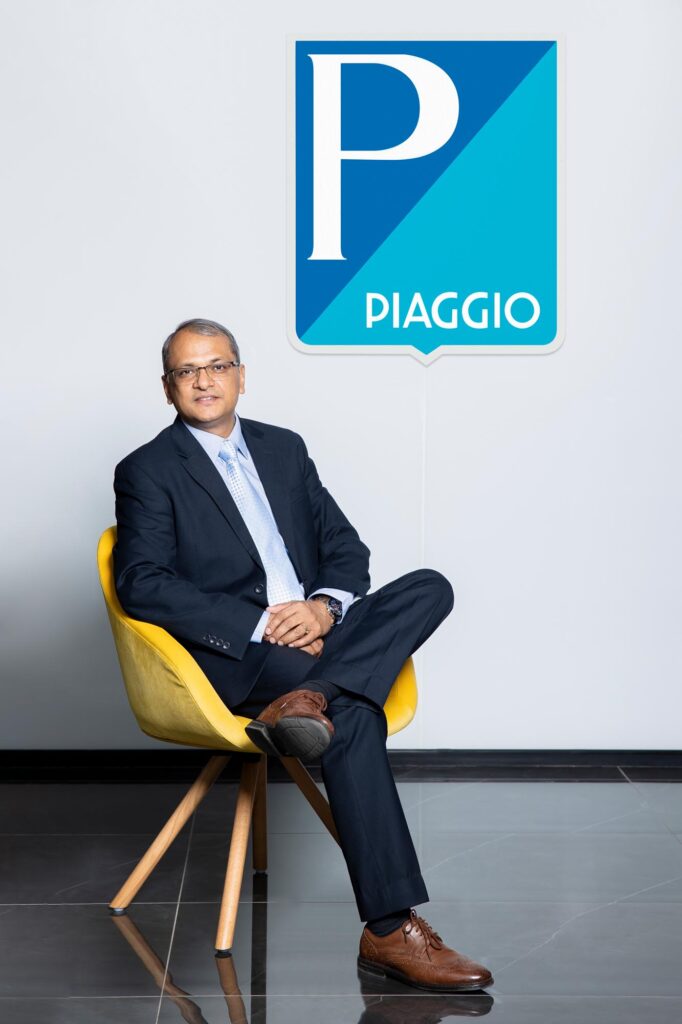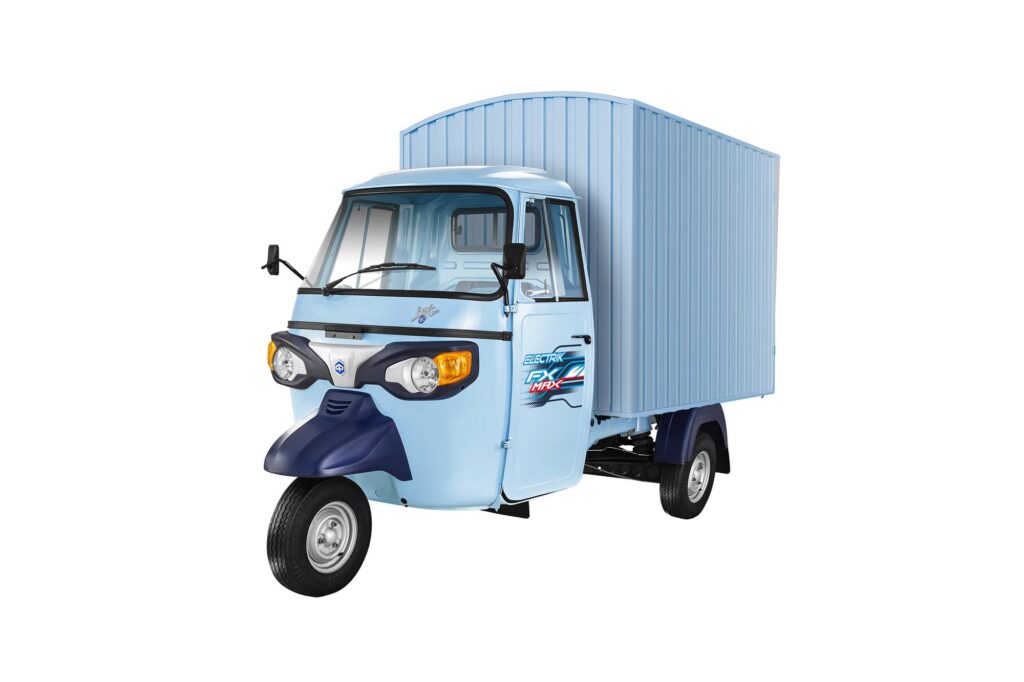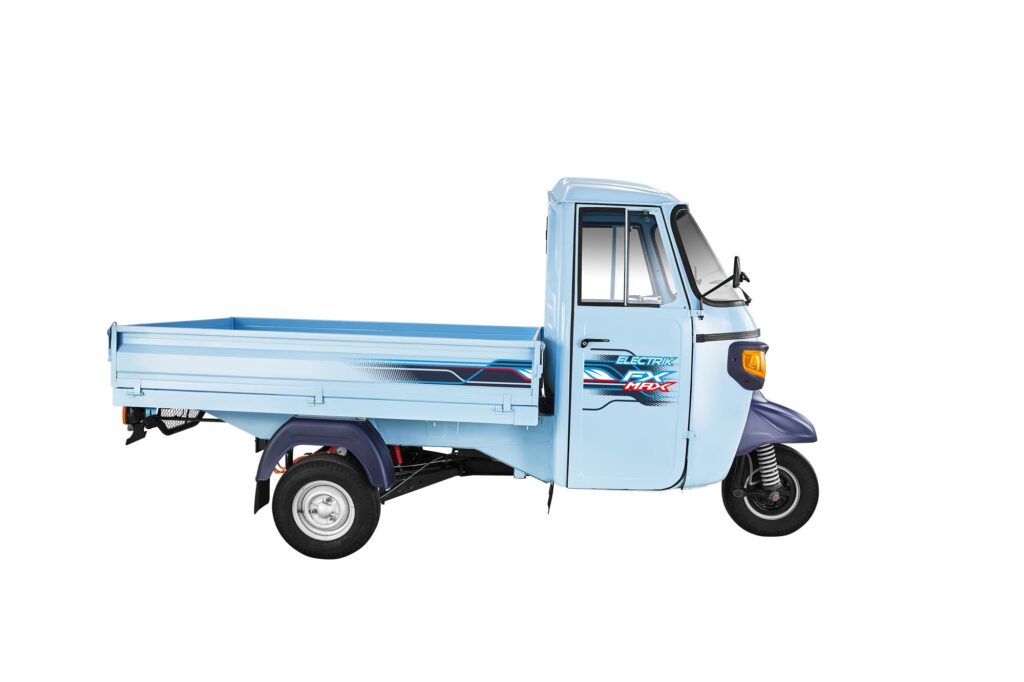
In this exclusive interview with N. Balasubramanian and Raghul Sivaguru, Amit Sagar, Executive Vice President of the CV Domestic Business at Piaggio Vehicles Pvt. Ltd., shares insights into the company’s innovative approach toward electrification in the commercial vehicle sector. From the launch of the battery subscription model to the company’s success in navigating India’s diverse urban and rural markets, Sagar discusses how Piaggio is staying ahead of industry trends, addressing customer concerns like battery anxiety, and shaping the future of cargo transportation. With over 30 lakh customers served, Piaggio continues to adapt its product offerings and strategies to meet evolving market demands while focusing on sustainability and innovation.
Piaggio had announced a Battery Subscription Model for EVs earlier this year. Can you explain the idea behind the move?
The battery subscription model was born from our ongoing efforts to understand customer needs and anticipate future market trends. “Battery anxiety”—concerns about maintenance, lifespan, and resale value—was a significant barrier to electric vehicle adoption. With potential subsidy reductions ahead, we aimed to create a long-term, attractive solution for electric 3-wheelers. The battery subscription model addresses these challenges by offering a convenient and accessible ownership option for e3Ws.
Was the initial cost of ownership a pain point for potential EV 3W owners?
Yes, affordability, especially the cost of the battery, was a major concern for potential electric 3-wheeler buyers. We understand that a large upfront investment can be a barrier. The battery subscription model allows customers to purchase the Apé Elektrik at a lower initial cost and spread the battery expense through a monthly fee. This makes electric mobility more accessible and appealing to a wider range of customers.

What are the differences between Battery Swapping and Battery Subscription?
Battery swapping and subscription models are reshaping the electric vehicle market. Swapping mimics the traditional refueling experience and helps reduce range anxiety but requires a strong swapping network, which is still developing. Our subscription model emphasizes affordability and convenience. It lowers upfront costs and eliminates battery maintenance concerns, with Piaggio handling replacements and ensuring optimal battery health. While customers pay a monthly fee, it offers a predictable cost structure. Ultimately, the choice depends on individual needs.
Piaggio has had considerable success in the LCV space with a wide range of fuel options. How has Piaggio navigated India’s urban and rural markets since 1999?
Piaggio’s journey in India has been one of continuous adaptation and innovation. From the beginning, we recognized the distinct needs of urban and rural landscapes. This allowed us to offer vehicles that fit different budgets, infrastructure availability, and operating environments. Expanding into multiple fuel options—diesel, petrol, CNG, and electric—has enabled us to cater to diverse customer needs and effectively navigate India’s varied terrains. Our extensive sales and service network has also been key in reaching customers across the country.
Looking forward, our commitment to growth is unwavering. We will continue expanding our product lines, focusing on quality and innovation to meet the evolving needs of both urban and rural customers.
What key insights have you gathered after serving over 30 lakh customers in India? What modern advancements do you see shaping the cargo space industry?
Serving over 30 lakh customers has provided invaluable insights into their preferences and challenges. We understand the need for diverse, reliable cargo solutions, from nimble urban vehicles to durable rural transport options. Affordability and trust are crucial, as downtime directly impacts customers’ businesses. We’ve also seen a growing demand for driver comfort, safety, and convenience features.

The future of cargo transport is undeniably electric. The Apé Elektrik, with its battery subscription model, aligns with this shift, offering zero-emission, cost-effective solutions. We foresee advancements in alternative fuels, connected technologies for fleet management, and an increased focus on driver well-being shaping a more sustainable and efficient cargo industry.
When considering gradeability, how do ICE and EV models compare? How does Piaggio manage weight concerns like batteries and fuel tanks in relation to payload?
There’s a common question about whether electric or ICE models perform better on inclines. Surprisingly, for small, low-speed EVs like the Apé Elektrik, electric motors can have the advantage. Electric motors deliver maximum torque instantly, which is beneficial for climbing inclines. Piaggio addresses weight concerns by optimizing designs and using lightweight materials. We position batteries strategically to minimize their impact on the center of gravity, ensuring our vehicles, whether electric, CNG, or ICE, offer strong payload capacity and perform confidently on inclines.
Are EV and bi-fuel vehicle drivers adequately informed about operational guidelines? How does Piaggio ensure vehicle uptime during servicing?
Yes, our channel partners and dealers thoroughly explain both purchase and battery leasing options to customers during their visits. They provide enough information to help customers decide whether to opt for outright purchase, which may come with higher EMIs, or the more affordable battery subscription model.
As a longstanding ICE player, how do you view the resale value of EVs in the LCV segment? Is range anxiety still a concern for E-LCVs?
Resale value for electric LCVs is still an emerging area, but the outlook is promising. Government incentives, battery technology improvements, and an expanding charging network all contribute to a brighter resale future. As EV technology advances and adoption increases, we’re confident the resale market will mature.
Range anxiety is a concern for E-LCV users, but Piaggio tackles it by understanding usage patterns, especially for predictable urban routes, and recommending EVs with battery capacities suited to daily needs. Advances in battery technology and the growth of charging infrastructure also help alleviate range concerns.
What are Piaggio’s medium to long-term expansion plans for the next fiscal year? How important are warranties and discounts in customer acquisition?
Piaggio’s growth strategy is focused on electrification. We will continue expanding our electric LCV offerings, while also advancing our ICE and CNG vehicles with better performance at lower costs. We’re expanding into new regions with high growth potential for LCVs. We prioritize customer trust, offering comprehensive warranties on all vehicles. Discounts can be an incentive, but building long-term relationships through quality products and understanding customer needs is our primary strategy.